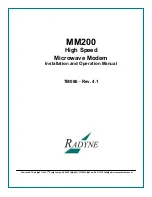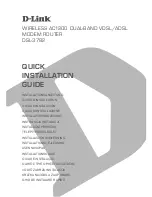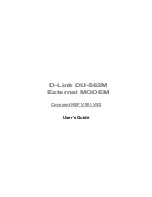
GT864-3G Terminal Product Description
80269ST10071a Rev.0 - 14/09/0
9
Reproduction forbidden without Telit Communications S.p.A. written authorization - All Rights Reserved
page 22 of 41
2.13
User Interface
The user interface of the GT864-3G Terminal is accessible from a Data Terminal Equipment DTE
connected to the RS232 interface and it is managed by AT commands specified on the ITU-T
V.250, 3gpp27.007 and 27.005 specifications and the supported commands are listed in the
UC864-E AT Commands Reference Guide.
2.13.1
Switching the GT864-3G Terminal ON and OFF
In this paragraph will be explained the way to switch the GT864-3G Terminal ON or OFF.
2.13.1.1
Switching ON the modem
There are two ways to switch on the modem, once power is applied:
• assert TO_IN high for > 1s;
• activate the RS232 control line DTR
The modem is fully operational after 4 seconds. Logging onto a network may take longer than this
and is outside the control of the modem. The modem can be configured to start up at the time
power is applied by permanently tying power connector signals TO_IN (pin 4) and VCC (pin 1)
together. In this case DTR must be used to switch the modem on again after it has been switched
off or reset, while power is still applied.
NOTE:
DTR must be cycled from low to high.
NOTE:
The TO_IN signal requires a positive “edge” (a “sharp” signal transition from low to
high) to
turn the modem on. This transition should be a rising signal from 0V (GND)
to VCC, or at least a
large fraction of that voltage range, and must be applied at the
same time as VCC or after it.
Very
slow transitions (significantly slower than many milliseconds) or very small
transitions (e.g. only a
few volts instead of 0V to VCC) will not turn on the module
(since they are not considered to be a
“positive edge”).
Although this will not be an issue in almost all typical applications of the modem, please consider
the following points:
•
large capacitors in your power supply which will lead to slow leading and falling edges
(issue does not apply with modern stabilized switching regulator power-adaptors) AND TO_IN
tied in parallel to VCC (instead of separate dedicated digital signal)
•
slow analogue signals used to assert TO_IN
•
TO_IN signal not before
VCC
All 3 cases above might prevent the modem from recognizing the power-up signal this is no failure
of the modem itself, the same would apply to almost any electronic device that provides a separate
“power-on” or “reset” signal.
If you are in doubt, please
•
use the mains power adapter that is provided by your distributor and is known to work
properly with your modem
•
make sure that your signal and system design is according to the above
•
consult our support team.
















































